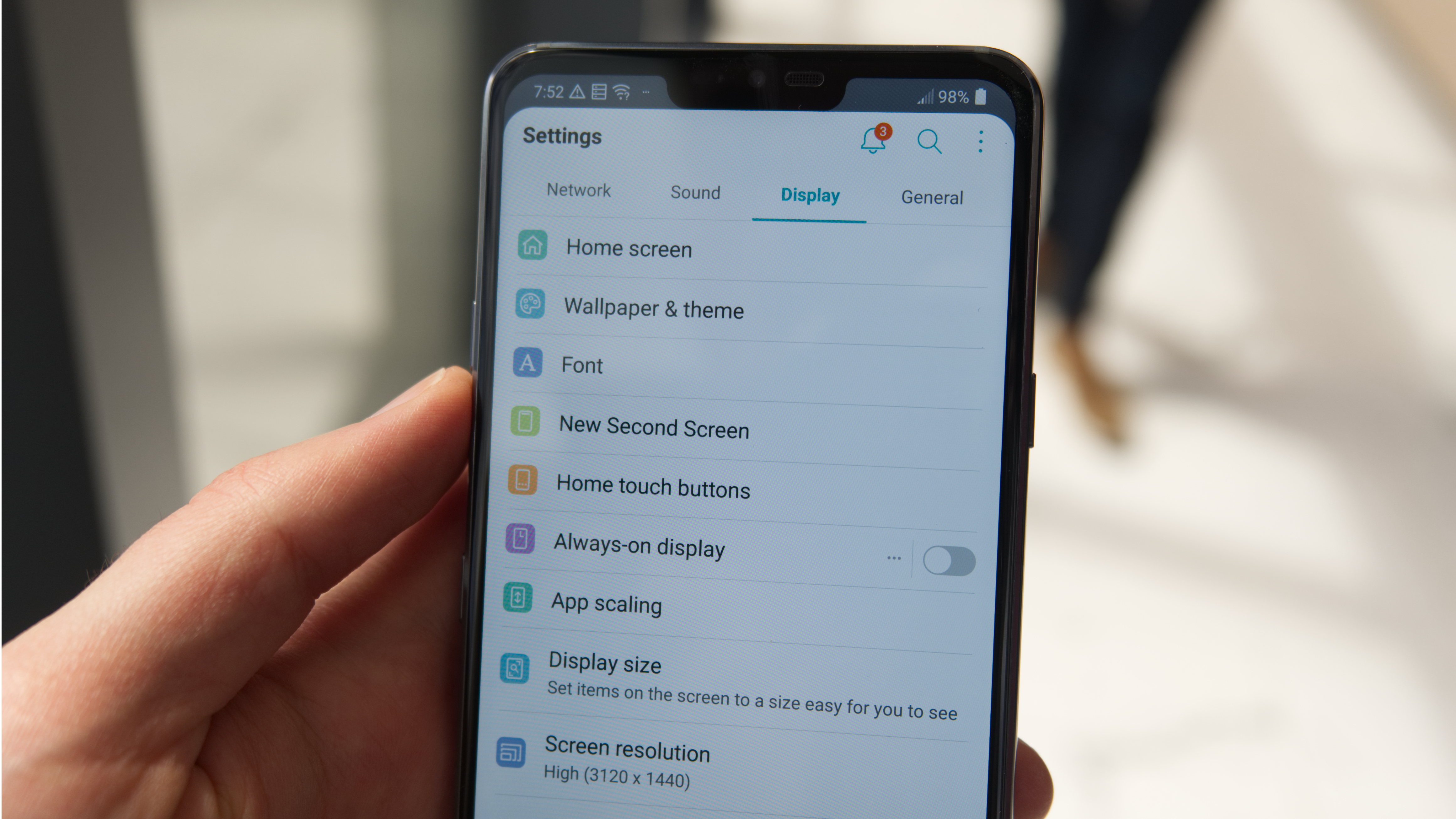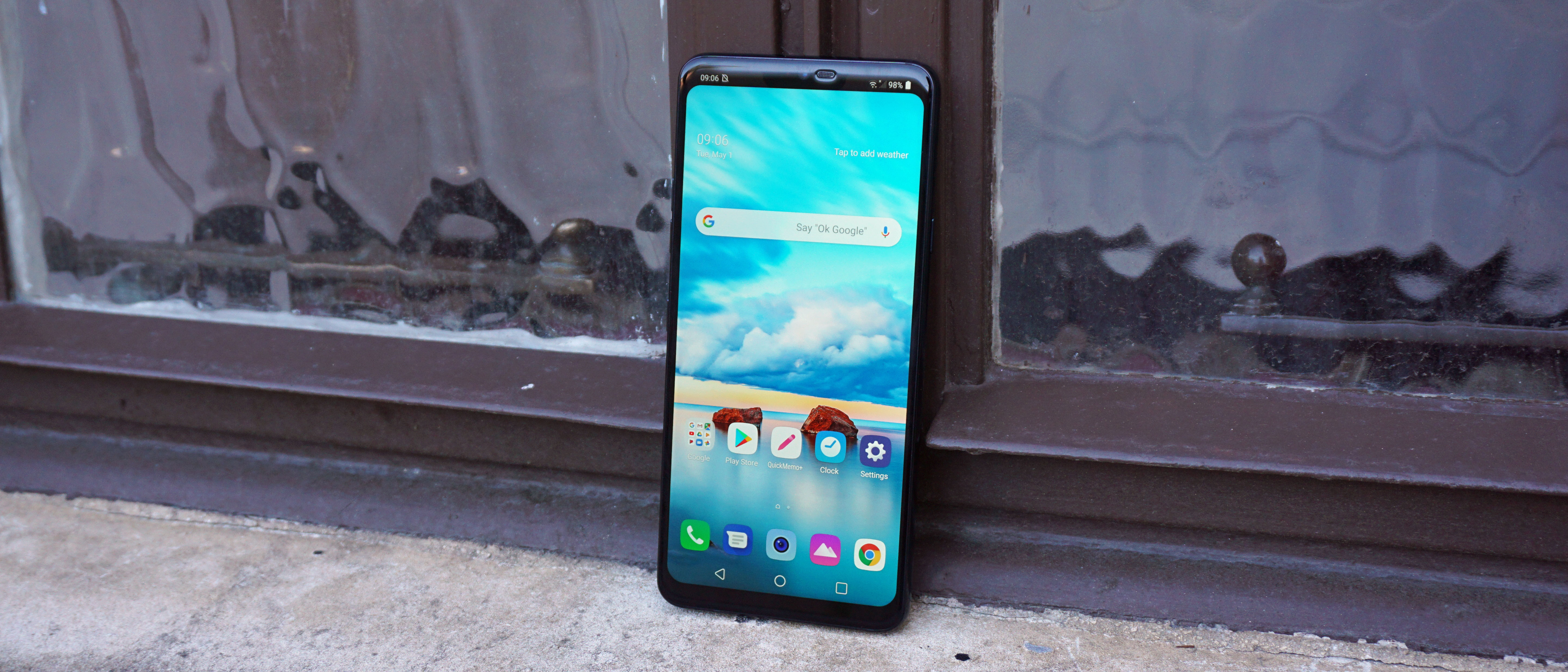Why you can trust TechRadar
Specs and software
- Flagship-level Snapdragon 845 chipset, 4GB of RAM, 64GB of storage
- 6GB of RAM + 128GB of storage variant availability is a mystery
- Android 8.0 Oreo with LG software skin and Smart Bulletin
With the LG G7 ThinQ, LG isn’t making the same mistake it made with the G6, which launched with the Snapdragon 821 chipset at the same time other phones were being outfitted with the Snapdragon 835. If a company is going to launch a flagship, it needs the latest flagship-level specs.

That’s why LG G7 is powered by this year’s flagship smartphone chip, Qualcomm's Snapdragon 845, and it’s coupled with 4GB of RAM, 64GB of internal storage, and a microSD card slot for expandable storage. All of this means the LG G7 is fast enough to compete in 2018.
It's just shy of the fastest performers, too, and only because many phones, including the Samsung Galaxy S9 Plus, are packing in 6GB of RAM. It'll be plenty fast for most people. There is a version of the LG G7 with 6GB of RAM and 128GB of internal storage, but LG hasn’t said where that’s destined to launch. It's not coming to the US, at least not yet, but it could act as a future LG G7+ down the line.
The LG G7 also has the latest operating system update, care of Android Oreo. The actual software doesn’t appear to be all that different from previous LG phones, down to the leftmost menu being dedicated to the familiar LG’s Smart Bulletin interface.
The biggest software perk has yet to be realized: LG promises that it'll be better at rolling out software updates. The G7 isn't part of the special Android P beta, but we're hopeful it won't take almost a year to get this new version of Google's operating system when it does launch. There are some exciting changes for Android P.
Battery life
- 3,000mAh battery is smaller than the V30 3,300mAh capacity
- We still got all-day battery life, but nothing more than that
- QuickCharge 3.0 wired charging as well as wireless charging
The G7 ThinQ has a 3,000mAh battery capacity, which is smaller than the LG V30’s 3,300mAh battery size. This is a compromise to maintain the phone’s dimensions, according to LG, even though the new phone it’s slightly thicker than the V30.
The good news? We still managed to get all-day battery life, with advanced software tricks making up for the diminished capacity. But we didn't get anything more than that in a single day with normal use (for us) and power saver mode on by bedtime.
Lab tests confirmed that the LG G7 battery life is on par with other phones at the 3,000mAh size. We ran a 90-minute looped HD video at full charge and, by the end, we were down to 84% battery life. The S9 Plus, with a larger 3,500mAh battery but a tad bigger 6.2-inch screen, dropped down to 87%.

The G7 uses USB-C and officially supports QuickCharge 3.0 and wireless charging. Unofficially, it supports QuickCharge 4.0 – if you can find a charger out there.
With the QuickCharge 3.0 charger included in the box, the G7 was one of the fastest to recharge in our test. Although things started out slow at 12% in 15 minutes and 37% in 30 minutes, we reached a 100% charge in just 100 minutes. Wireless charging is supported, but was noticeably slower, as expected.
Current page: Specs, software and battery life
Prev Page AI cameras and Boombox speaker Next Page Verdict
